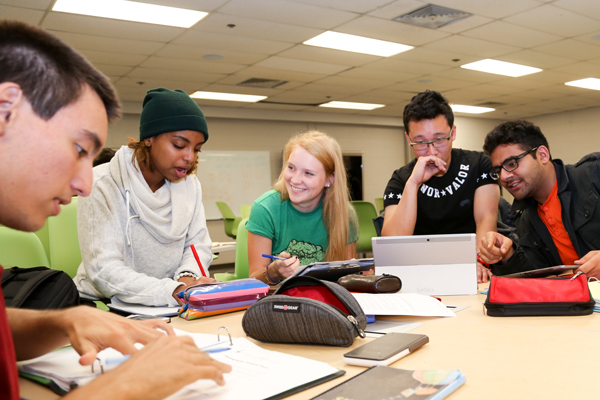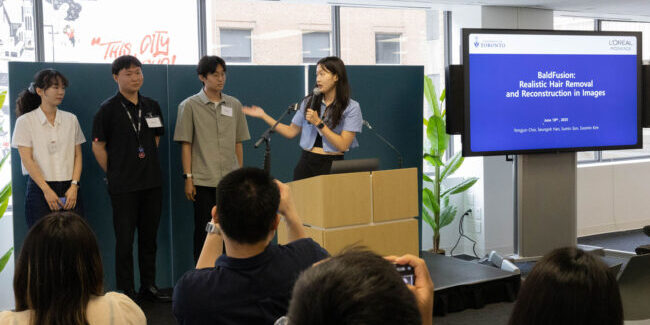U of T Engineering’s newest building — the Centre for Engineering Innovation & Entrepreneurship (CEIE) — is home to technology enhanced active learning (TEAL) rooms designed to support blended modalities of teaching and creative design activities. A new Faculty-wide program is supporting professors as they leverage the potential of these spaces and implement active learning approaches across all of their courses.
“I really enjoyed my undergraduate engineering education, but at the same time I feel that there is more that we as professors can do to engage students while in the classroom,” says Professor Marianne Touchie (CivE, MIE), one of 22 TEAL Fellows named by the Faculty last May. “The TEAL Fellowship is the perfect way for me to get plugged into a community of like-minded instructors.”
The TEAL Fellows form a community of practice dedicated to active learning — a term that refers to a diverse range of approaches where students co-construct the learning environment. Labs and tutorials are two examples, but active learning can also apply to interactive components of a lecture, such as using smartphone apps to quiz or poll the entire class and check understanding of key concepts.
Professor Micah Stickel (First Year Office, ECE) Vice-Dean, First Year, is an advocate of an active learning approach known as the ‘flipped’ or ‘inverted’ classroom. “What we would normally have done in class — present new information to students — is done outside of class,” he says. “This enables the students to engage with the course material more effectively during class through collaborative learning activities with the support and guidance of the professor.”
Stickel supported the piloting of this approach in a number of first-year courses. Through his Hart Teaching Professorship, he is also conducting research into how this approach engages students, and how training, mentorship and modelling can help professors incorporate it into their classroom practice.
Active learning can be further enhanced through specially designed classrooms, such as the TEAL rooms that U of T Engineering has piloted since 2014. Instead of fixed rows of desks facing an instructor, moveable tables and chairs enable the room’s configuration to change, encouraging interactivity and collaboration. Screens positioned on all walls provide an easy way to share material from any student team with the entire class. The CEIE contains several TEAL rooms, and its main auditorium also incorporates active learning features.
“An active learning classroom starts changing your class from the second that you walk in,” says Allison Van Beek, an Instructional Technology Specialist with U of T Engineering. “Our goal is to support faculty as they purposefully and effectively rethink their courses for these new spaces.”
Several offices within the Faculty — including the Educational Technology Office (EdTech), the Engineering & Computer Science Library (ECSL) and the Engineering Communication Program (ECP) — are collaborating to provide a diverse range of supports for the community of TEAL Fellows.
Throughout the first term of the fellowship, the team organized several group sessions, including workshops where instructors who have worked extensively in active learning classrooms elsewhere at U of T shared their best practices. Another session focused on Peerwise, a tool that supports students in the creation, sharing, evaluation and discussion of assessment questions.
In the second term of the fellowship, the team is focusing on one-on-one meetings, providing personalized advice and guidance on how active learning approaches could apply to the specific courses they are teaching.
“Everyone has different ways of working and thinking depending on the challenges of their field, and different levels of experience with active learning approaches,” says Professor Deborah Tihanyi, Director of the Engineering Communication Program. “We want to meet people where they are, and provide them with the tools they need to take the next step, whatever it may be.”
The advantage of the community of practice model is that it is designed to become self-sustaining. As more professors gain experience with active learning approaches, they can serve as a resource for the entire faculty complement, with continued support from EdTech, ECSL and ECP.
“Hearing examples of the activities that other instructors have used in class has been the most helpful so far,” says Touchie. “But it’s also taught me that we need to monitor feedback from our students and adjust our approach accordingly. The key is to make sure that we’re using technology not just because it is there, but in a way that truly enhances the student experience.”




